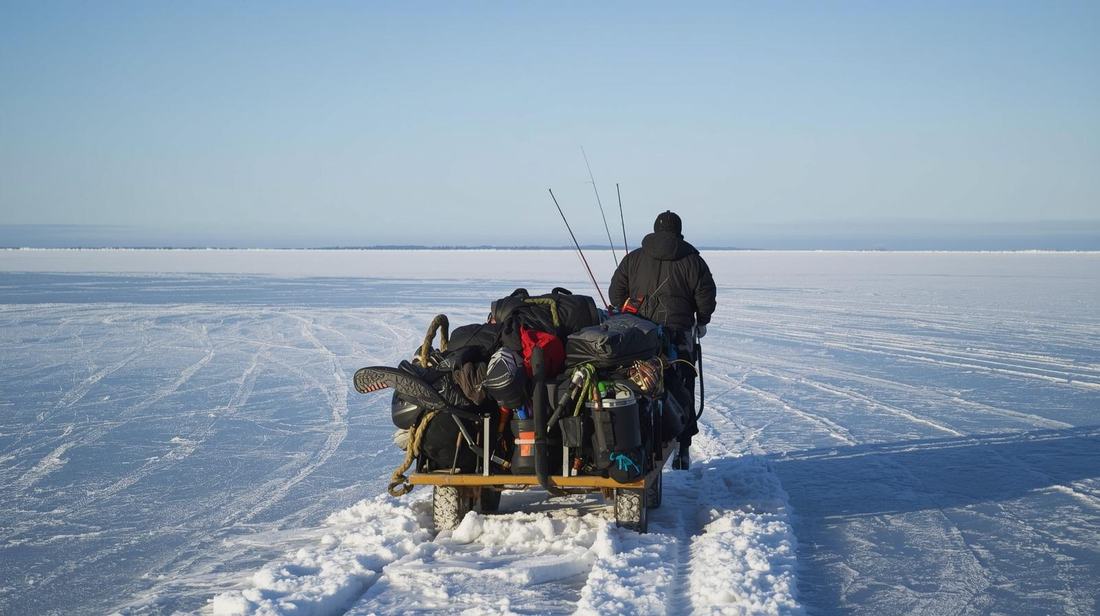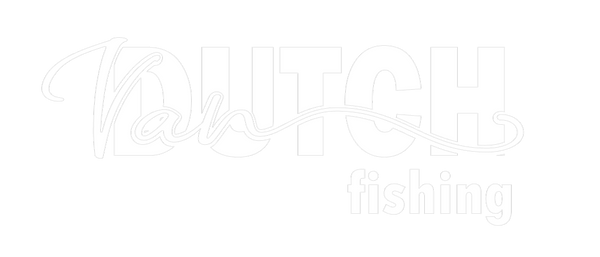
Share
Do you take this amount of gear our on the ice, yes it's an exaggeration, thank you AI, but last winter even though my sled wasn't this loaded, it felt like it was. Last year, I’ll be honest — I wasn’t in great shape heading into ice fishing season. I was somewhere between 15 and 20 pounds heavier than I should be, not exercising much, and generally just out of rhythm. Being "middle aged" doesn't help either but all the more reason to get back into shape. It hit me pretty quickly once the ice started forming. Those early days of walking across first ice with a sled full of gear were a real wake-up call. I was winded faster than I should’ve been, my back complained more than it used to, and even simple things like drilling holes or setting up the hut felt harder than they used to.
That experience stuck with me and I'd rather not repeat it. So this year, I decided to make a change — to actually get in shape for ice fishing season, not just hope that dragging the sled would get me there.
Why Fitness Matters for Ice Fishing
Ice fishing doesn’t always get credit for being physically demanding, but anyone who’s spent a full day out there — especially early or late in the season — knows the truth. When the ice is still too thin for machines, you’re on foot, pulling everything you need by hand. You might walk a mile or more over uneven, slippery ice. You’re kneeling, standing, drilling, lifting, hauling — and all of it in cold, heavy gear.
Later in the season, when the ice starts getting soft again and you’re back to walking instead of riding, those same challenges return. A little extra fitness can make all the difference between enjoying those days or fighting through them.
I realized that if I wanted to be able to fish harder, go farther, and stay out longer — especially during those prime early-ice and late-ice bites — I needed to take my fitness as seriously as I take my tackle organization.
My Approach This Year
I’m not following a complicated program or spending hours in a gym. Between running a small business, raising a family, and trying to sneak in as much lure making and fishing time as possible, I don’t have that kind of schedule. So I carved out 25 minutes a day — that’s it — but I go hard and focused during that time.
Here’s what I’m doing:
-
Resistance training three days a week with a pair of 15-pound dumbbells.
I stick to compound, multi-joint movements — things like dumbbell thrusts, squats, rows, and presses. They hit multiple muscle groups at once and translate well to the real-world strength you need for hauling sleds, drilling holes, and lifting gear. -
Cardio two days a week.
Nothing fancy — just consistent, steady effort. Some days it’s a brisk walk, other days it’s intervals or a quick jog. The goal is simple: improve endurance so I’m not gassed halfway across the lake. -
Walking as often as possible.
Even on rest days, I try to get out for a walk. It helps recovery, burns calories, and honestly clears the head. Plus, walking is exactly what early- and late-ice fishing demands.
Setting Realistic Goals
My goals are straightforward — better endurance, better strength, and some weight loss. I’m not chasing a marathon time or bodybuilding trophy. I just want to feel stronger and move better when it’s time to haul the sled, set up camp, or hike out to that one perfect mid-lake hump I’ve marked on GPS.
The best part is that these short, consistent workouts actually fit into my life. I don’t dread them, I don’t skip them, and I’m already feeling the difference — more energy, less stiffness, and the sense that I’m really preparing for the season ahead.
The Payoff on the Ice
Getting in better shape doesn’t just make ice fishing easier — it makes it safer and more enjoyable. When you’re less fatigued, you make better decisions on sketchy ice. When your balance and strength improve, slips are less likely. And when you’re in shape, you just plain enjoy the day more — even when you’re hoofing it across the lake in the wind.
There’s also a very real health and safety benefit that doesn’t get talked about enough in the ice fishing world. Every winter, we hear stories about anglers suffering heart attacks on the ice — often while hauling heavy sleds or drilling holes in bitter cold conditions. The combination of physical exertion, bulky clothing, and cold temperatures is a dangerous mix. Cold weather causes blood vessels to constrict and blood pressure to rise, which means your heart has to work harder to pump blood — especially if you’re not in great shape to begin with.
By improving your cardiovascular fitness and overall conditioning, you dramatically reduce that risk. Stronger muscles and a healthier heart handle those bursts of effort and cold stress much more safely. Simply put, being in better shape can literally help keep you alive out there.
This winter, I want to be the guy who still has enough gas in the tank to drill a few extra holes when the bite slows down — not the one thinking about how far the truck is.
Final Thoughts
If you love ice fishing as much as I do, start getting ready now. You don’t need fancy equipment or a gym membership. Just commit to moving your body a little every day and building the strength and endurance that early and late season ice fishing demand.
Because when that first cold snap hits and you’re walking out for the first time of the year — sled in tow, breath hanging in the air — you’ll be glad you did the work.
